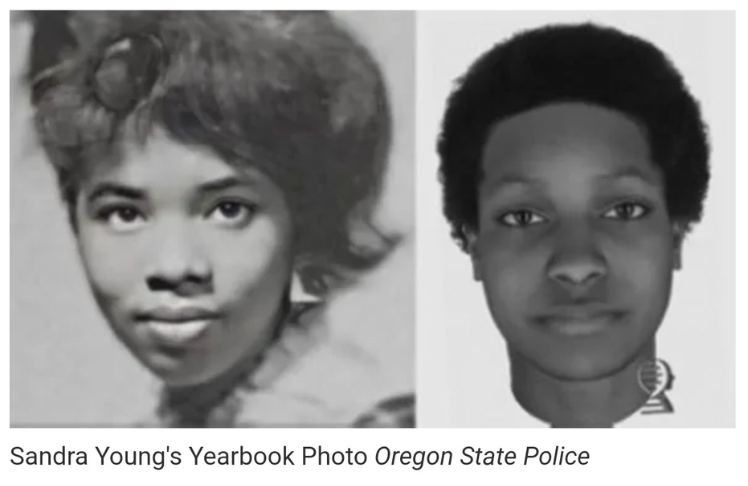
In a tragic turn of events, a missing Portland teenager who vanished in the late 1960s has been discovered deceased in 1970, thanks to advancements in DNA technology. Sandra Young, a student at Grant High School, has finally regained her identity after her relatives began uploading their information into a national DNA database, according to the Oregon State Police.
The details surrounding Sandra Young’s disappearance in either 1968 or 1969, when she was just 17 or 18 years old, have been scarce. However, through the utilization of genetic genealogy, which combines genealogical DNA tests with traditional genealogical methods, authorities were able to identify Young by establishing familial relationships.
The discovery of Young’s body on Sauvie Island in Columbia County doesn’t shed much light on the tragic end to her life.
For her family, there “is no sense of closure, there is no sense of justice about this.” On February 23, 1970, a Boy Scout trooper exploring the far north end of Sauvie Island stumbled upon what initially appeared to be clothing. Upon closer inspection, the Scout made the haunting realization that it was the remains of Sandra Young.
The advancements in DNA technology has allowed Young’s family to finally find more information after more than 50 years of uncertainty and anguish. The ability to identify Young through genetic genealogy showcases the power of science and the importance of familial DNA databases in solving cold cases.
The discovery of Young’s body raises new questions about the circumstances surrounding her disappearance and subsequent death. Law enforcement will continue to investigate and piece together the events that led to this tragic outcome in an effort to bring closure to Young’s loved ones.
This case serves as a reminder of the enduring impact that unresolved missing persons cases have on families and communities. The advancements in DNA technology offer hope to countless families who have been searching for answers for decades. The ability to identify and bring closure to these cases not only provides solace to grieving families but also highlights the importance of continued efforts to improve and expand DNA databases.
As the story of Sandra Young unfolds, it is a testament to the power of DNA technology. Young’s family can finally lay her to rest and find some measure of peace. It is a solemn reminder of the significance of never giving up on missing persons cases and the importance of utilizing every available resource to bring closure to those affected by these tragedies.















